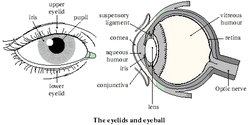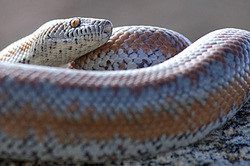
Have you ever thought about how you can see things and how the light passes through your eye? Well, today I am going to explain the process of light passing through to your eye. Everybodys eyes are about an inch in diameter; they each have a cornea and a pupil. But, how does the light pass through?
The light passes through by going through the cornea all the way to the optic nerve of your eyeball. It then goes through the retina, the inside back wall of the eye. Your eye works like a camera, but it is more complex. It is able to turn the image you see upside down in order to see it correctly.

Yesterday, as you all know, we went to the zoo! It was so much fun. We did great on our website, and our poster looked amazing up by our animal in the reptile house! It was cool to see something that we had made and illustrated put up in the zoo where others could see it.
As you know, we all put in a lot of effort for this zoo project. It took time and dedication to find out all this info about the desert rosy boa, then put it into a website and have a whole page created about it. I am very proud of our group and our work. We had almost all of the info that the zoo had about the desert rosy boa. The only main info that we did not have was the info about whether it was a safe-endangered species. By the way, it is a pretty safe species. All in all, we had most of the info that the zoo had and even more!

Today I am going to explain how rainbows form. Well, rainbows are optical and meteorological phenomenon that are formed by the reflection of light in water droplets that fall into earth's atmosphere. They result into a spectrum of light that appear in the sky.
The rainbow that shows red on the outer part and violet on the inner side is known as a "primary rainbow". Another type of rainbow is a "double rainbow". This type of rainbow has a second arc that is seen outside of the primary arc. It also has the order of its colors reversed, so red is facing towards the other one in both of the rainbows.

Last week, I wrote about why the sky is blue. However, I used no research at all. It was only my ideas/thoughts as to why the sky is blue. Today I am going to be talking about the same topic, but I will used scientific research to find out why. Here we go.
One reason that the sky is blue is because of the colors/ reflections that we see. Our eyes, as you may know, see things a certain way depending on the colors that are appearing. Part of it, is also because of scattering. Scattering is when the reflection of something scatters. Instead of all reflecting at the same angle, the angles scatter. This is all I have time for today, but maybe you want to look up the reasons now, so you get all the details.




 RSS Feed
RSS Feed